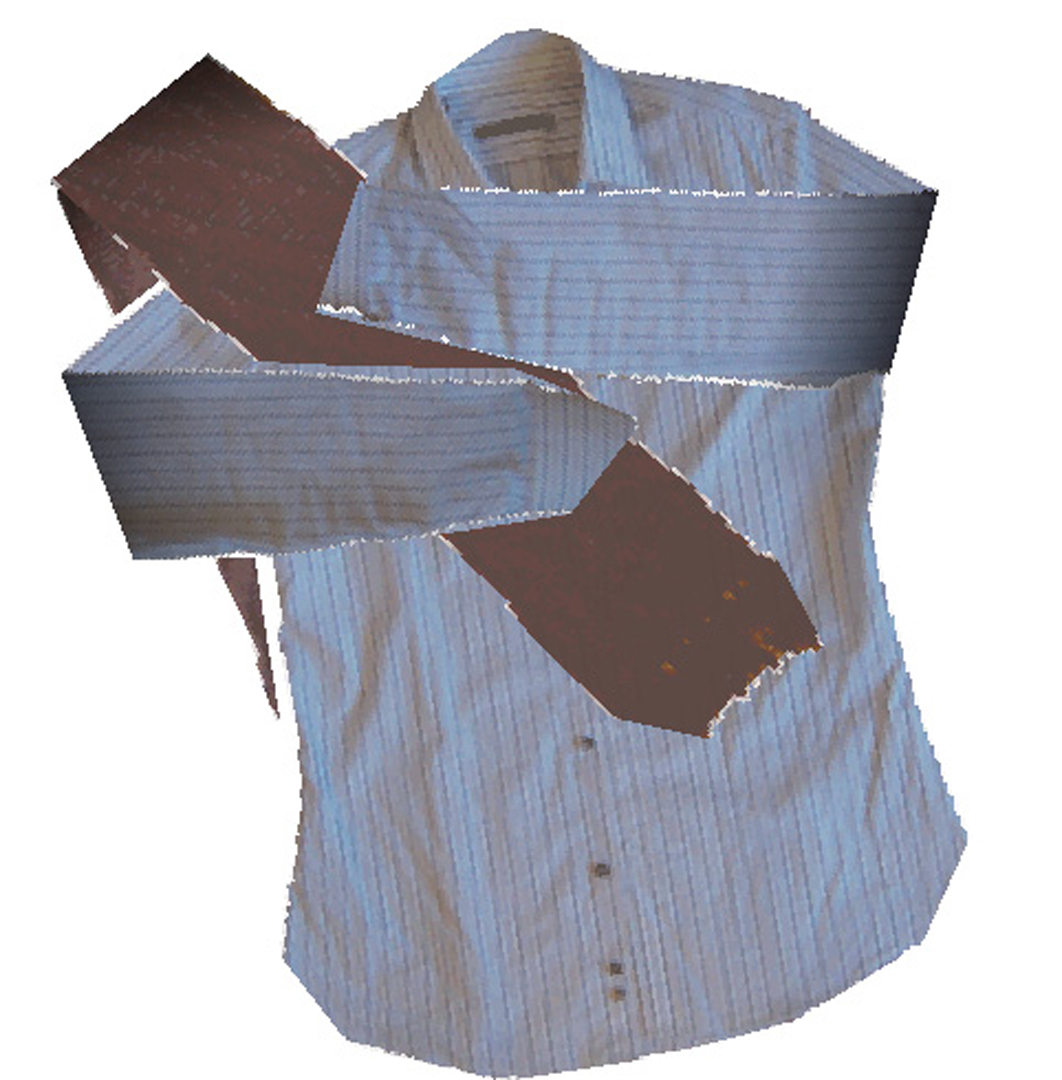“Apparent layer operations for the manipulation of deformable objects” by Igarashi and Mitani
Conference:
Type(s):
Title:
- Apparent layer operations for the manipulation of deformable objects
Presenter(s)/Author(s):
Abstract:
We introduce layer operations for single-view 3D deformable object manipulation, in which the user can control the depth order of layered 3D objects resting on a flat ground with simple clicks and drags, as in 2D drawing systems. We present two interaction techniques based on this idea and describe their implementation. The first technique is explicit layer swap. The user clicks the target layer, and the system swaps the layer with the one directly underneath it. The second technique is layer-aware dragging. As the user drags the object, the system adjusts its depth automatically to pass over or under a colliding object in the screen space, according to user control. Although the user interface is 2.5D, all scene representations are true 3D, and thus the system naturally supports local layering, self-occlusions, and folds. Internally, the system dynamically computes the apparent layer structure in the current configuration and makes appropriate depth adjustments to obtain the desired results. We demonstrate the effectiveness of this approach in cloth and rope manipulation systems.
References:
1. Asente, P., Schuster, M., and Pettit, T. 2007. Dynamic planar map illustration. ACM Trans. Graph. 26, 3, 30. Google ScholarDigital Library
2. Baudelaire, P., and Gangnet, M. 1989. Planar maps: an interaction paradigm for graphic design. In Proceedings of CHI ’89, 313–318. Google ScholarDigital Library
3. Bern, M., and Hayes, B. 1996. The complexity of flat origami. In Proceedings of SODA ’96, 175–183. Google ScholarDigital Library
4. Brown, J., Latombe, J.-C., and Montgomery, K. 2004. Real-time knot-tying simulation. Vis. Comput. 20, 2, 165–179. Google ScholarDigital Library
5. Burgoon, R., Grinspun, E., and Wood, Z. 2006. Discrete Shells Origami. In Proceedings of Computers And Their Applications, 180–187.Google Scholar
6. Cordier, F., and Seo, H. 2007. Free-form sketching of self-occluding objects. IEEE Comput. Graph. Appl. 27, 1, 50–59. Google ScholarDigital Library
7. Demaine, E. D., and O’Rourke, J. 2007. Geometric Folding Algorithms: Linkages, Origami, Polyhedra. Cambridge University Press, New York, NY, USA. Google ScholarDigital Library
8. Eisemann, E., Paris, S., and Durand, F. 2009. A visibility algorithm for converting 3D meshes into editable 2D vector graphics. ACM Trans. Graph. 28 (July), 83:1–83:8. Google ScholarDigital Library
9. Fabianowski, B., and Dingliana, J. 2008. Sketching complex generalized cylinder spines. In Computer Graphics International 2008, 270–276.Google Scholar
10. Gleicher, M., and Witkin, A. 1992. Through-the-lens camera control. Computer Graphics (Proceedings of SIGGRAPH 92). 26, 331–340. Google ScholarDigital Library
11. Herndon, K. P., Zeleznik, R. C., Robbins, D. C., Conner, D. B., Snibbe, S. S., and van Dam, A. 1992. Interactive shadows. In Proceedings of UIST ’92, 1–6. Google ScholarDigital Library
12. Igarashi, T., and Hughes, J. F. 2001. A suggestive interface for 3D drawing. In Proceedings of UIST ’01, 173–181. Google ScholarDigital Library
13. Igarashi, T., Moscovich, T., and Hughes, J. F. 2005. As-rigid-as-possible shape manipulation. ACM Trans. Graph. 24 (July), 1134–1141. Google ScholarDigital Library
14. Karpenko, O. A., and Hughes, J. F. 2006. Smoothsketch: 3D free-form shapes from complex sketches. ACM Trans. Graph. 25, 3 (July), 589–598. Google ScholarDigital Library
15. McCann, J., and Pollard, N. 2009. Local layering. ACM Trans. Graph. 28 (July), 84:1–84:7. Google ScholarDigital Library
16. Miyazaki, S., Yasuda, T., Yokoi, S., and Toriwaki, J. 1996. An origami playing simulator in the virtual space. The Journal of Visualization and Computer Animation 7, 1, 25–42.Google ScholarCross Ref
17. Müller, M., Heidelberger, B., Teschner, M., and Gross, M. 2005. Meshless deformations based on shape matching. ACM Trans. Graph. 24 (July), 471–478. Google ScholarDigital Library
18. Reisman, J. L., Davidson, P. L., and Han, J. Y. 2009. A screen-space formulation for 2D and 3D direct manipulation. In Proceedings of UIST ’09, 69–78. Google ScholarDigital Library
19. Rivers, A. R., and James, D. L. 2007. FastLSM: fast lattice shape matching for robust real-time deformation. ACM Trans. Graph. 26 (July). Google ScholarDigital Library
20. Scharein, R. G. 1998. Interactive topological drawing. PhD thesis. Adviser-Booth, K. S. and Adviser-Little, J. J. Google ScholarDigital Library
21. Snyder, J., and Lengyel, J. 1998. Visibility sorting and compositing without splitting for image layer decompositions. In Proceedings of SIGGRAPH 1998, 219–230. Google ScholarDigital Library
22. Wiley, K., and Williams, L. R. 2006. Representation of interwoven surfaces in 2 1/2 d drawing. In Proceedings of CHI ’06, 65–74. Google ScholarDigital Library
23. Williams, L. R. 1997. Topological reconstruction of a smooth manifold-solid from its occluding contour. Int. J. Comput. Vision 23, 1, 93–108. Google ScholarDigital Library
24. Zeleznik, R. C., Herndon, K. P., and Hughes, J. F. 1996. Sketch: an interface for sketching 3D scenes. In Proceedings of SIGGRAPH 1996, 163–170. Google ScholarDigital Library
25. Zeleznik, R. C., Forsberg, A. S., and Strauss, P. S. 1997. Two pointer input for 3D interaction. In Proceedings of SI3D ’97, 115–120. Google ScholarDigital Library




